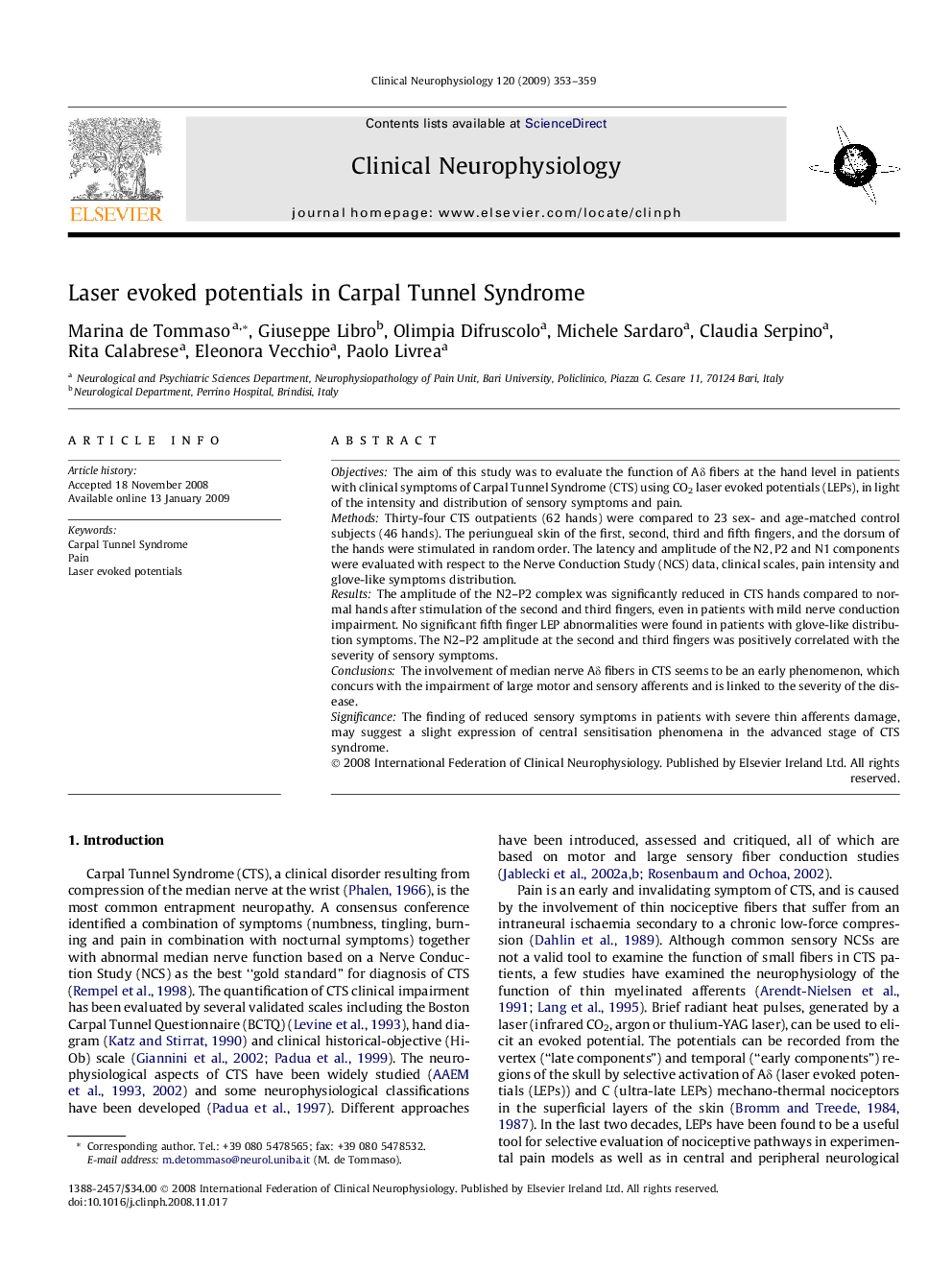| Article ID | Journal | Published Year | Pages | File Type |
|---|---|---|---|---|
| 3047131 | Clinical Neurophysiology | 2009 | 7 Pages |
ObjectivesThe aim of this study was to evaluate the function of Aδ fibers at the hand level in patients with clinical symptoms of Carpal Tunnel Syndrome (CTS) using CO2 laser evoked potentials (LEPs), in light of the intensity and distribution of sensory symptoms and pain.MethodsThirty-four CTS outpatients (62 hands) were compared to 23 sex- and age-matched control subjects (46 hands). The periungueal skin of the first, second, third and fifth fingers, and the dorsum of the hands were stimulated in random order. The latency and amplitude of the N2, P2 and N1 components were evaluated with respect to the Nerve Conduction Study (NCS) data, clinical scales, pain intensity and glove-like symptoms distribution.ResultsThe amplitude of the N2–P2 complex was significantly reduced in CTS hands compared to normal hands after stimulation of the second and third fingers, even in patients with mild nerve conduction impairment. No significant fifth finger LEP abnormalities were found in patients with glove-like distribution symptoms. The N2–P2 amplitude at the second and third fingers was positively correlated with the severity of sensory symptoms.ConclusionsThe involvement of median nerve Aδ fibers in CTS seems to be an early phenomenon, which concurs with the impairment of large motor and sensory afferents and is linked to the severity of the disease.SignificanceThe finding of reduced sensory symptoms in patients with severe thin afferents damage, may suggest a slight expression of central sensitisation phenomena in the advanced stage of CTS syndrome.
